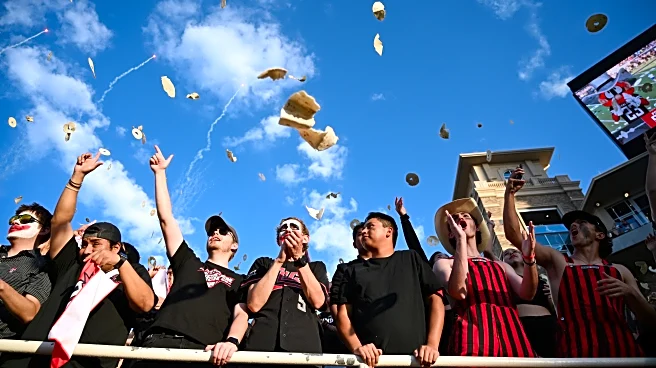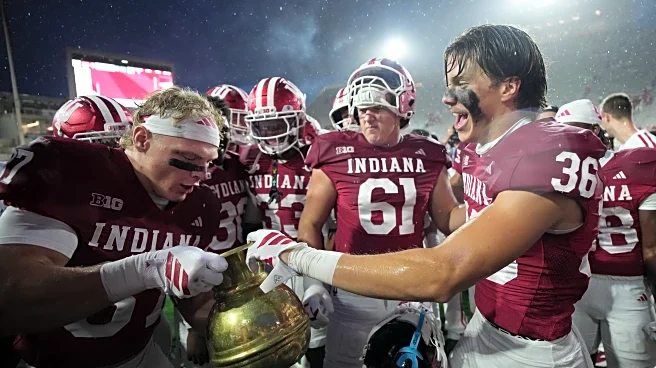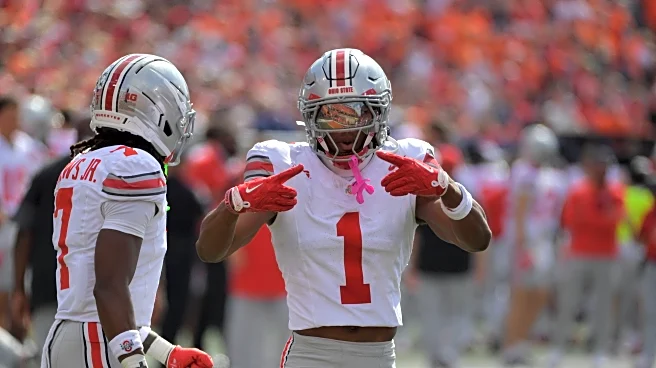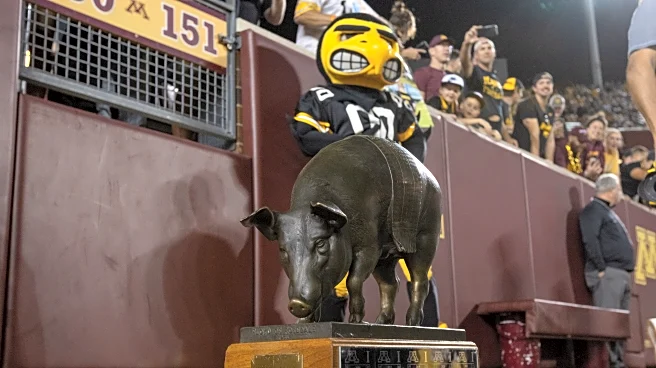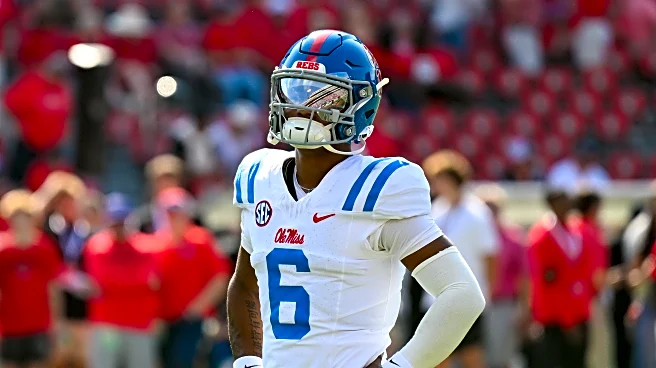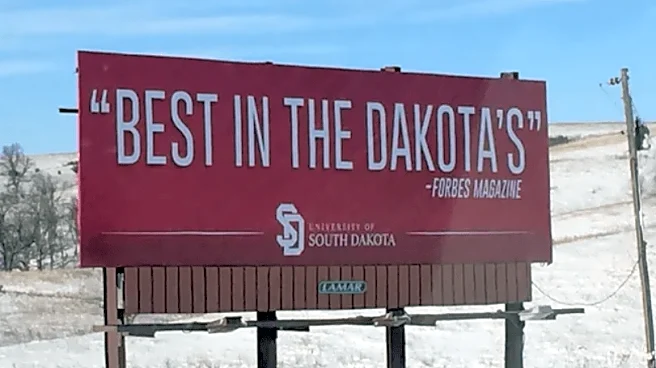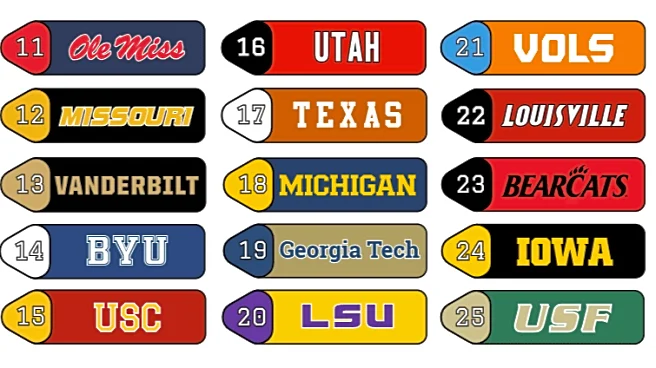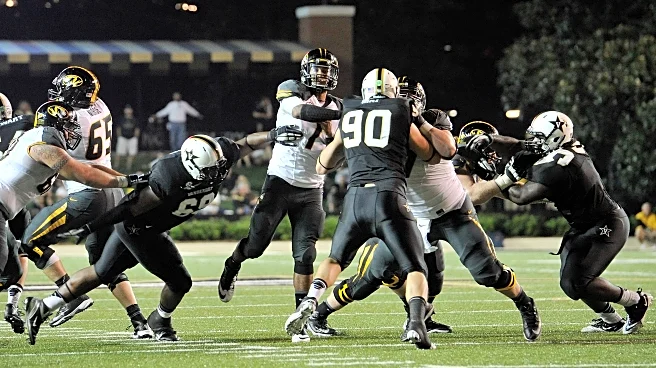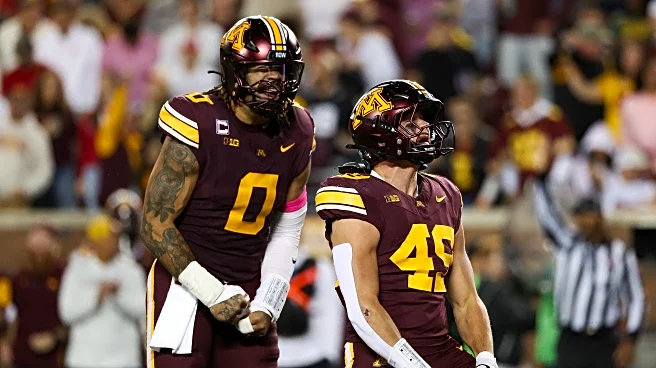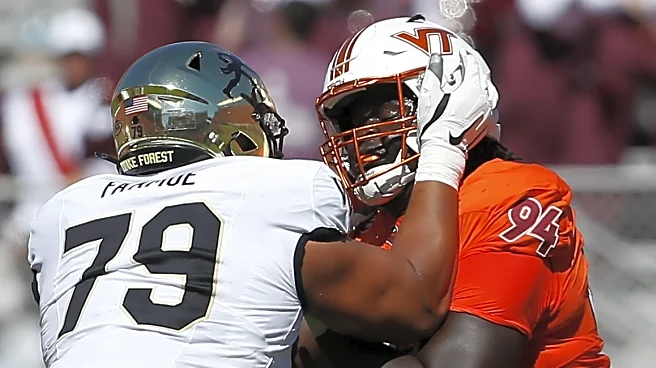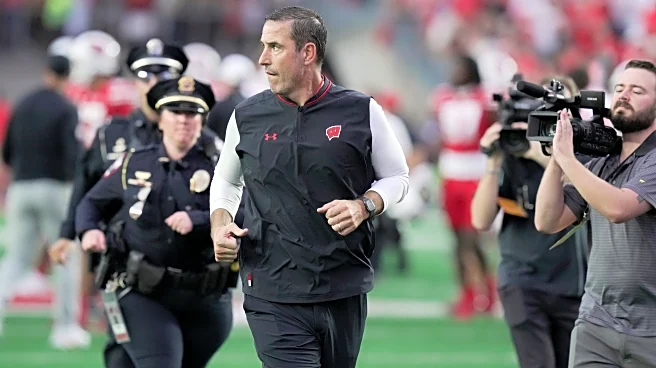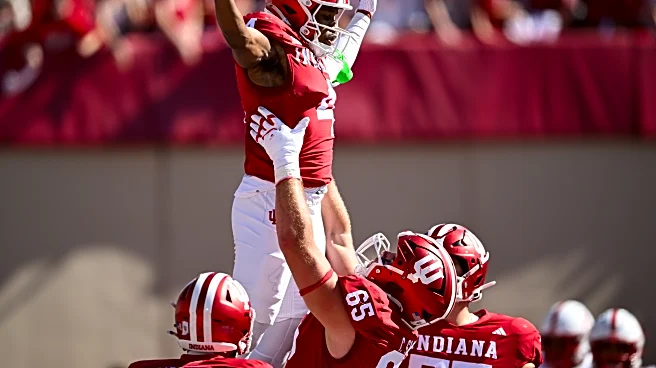What's Happening?
College football is renowned for its rich traditions, which are celebrated across various stadiums in the United States. These traditions range from the Sooner Schooner at Oklahoma, where a wagon and two live horses are involved, to the Hawkeye Wave at Iowa,
a touching gesture where fans wave to patients at a nearby children's hospital. Other notable traditions include Ohio State's 'Dotting the i', South Carolina's 'Sandstorm', and Wisconsin's 'Jump Around'. Each tradition carries its unique history and significance, contributing to the vibrant culture of college football. These traditions not only enhance the game-day experience but also foster a sense of community and school spirit among fans and players alike.
Why It's Important?
These traditions play a crucial role in the cultural fabric of college football, offering fans a sense of identity and belonging. They enhance the atmosphere of games, making them memorable experiences for attendees. The traditions also serve as a bridge between past and present, preserving the history and legacy of the institutions involved. For universities, these traditions can be a significant draw for prospective students and athletes, showcasing the unique spirit and camaraderie of their sports programs. Additionally, they contribute to the economic vitality of college sports, attracting large crowds and generating revenue through ticket sales and merchandise.
What's Next?
As college football continues to evolve, these traditions are likely to be preserved and celebrated, with potential new traditions emerging as schools seek to enhance their game-day experiences. Universities may invest in promoting these traditions to attract more fans and boost their sports programs' visibility. There could also be efforts to ensure these traditions are inclusive and respectful, reflecting the diverse communities they represent. Stakeholders, including university administrations and alumni, may play a role in maintaining and adapting these traditions to fit modern values and expectations.
Beyond the Headlines
The ethical and cultural dimensions of these traditions are significant, as they reflect the values and identity of the institutions involved. They can foster unity and pride, but also raise questions about inclusivity and representation. As society becomes more diverse, universities may need to consider how these traditions can evolve to be more inclusive of all community members. Additionally, the long-term impact of these traditions on the cultural landscape of college sports is profound, as they contribute to the enduring legacy and identity of the institutions.


